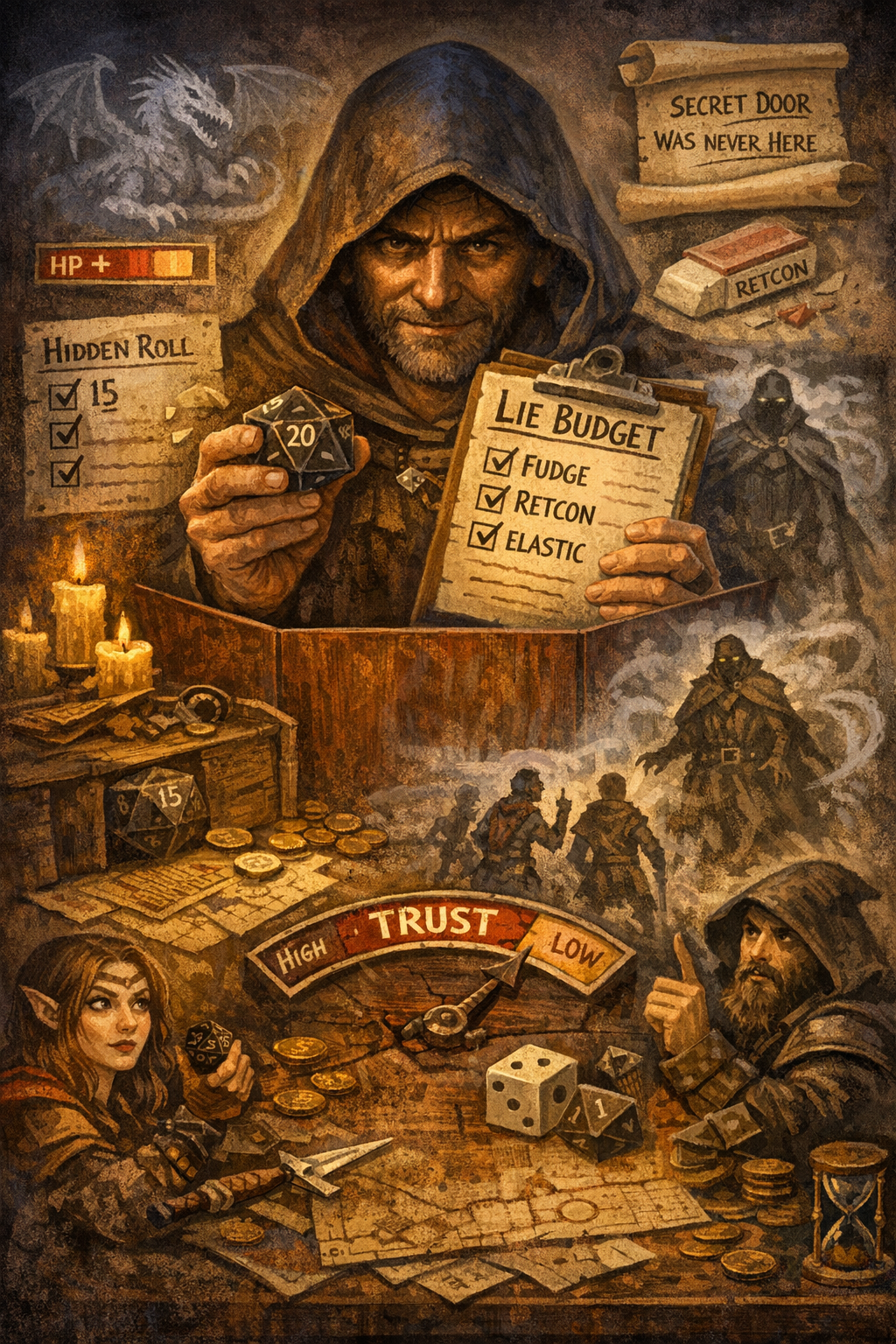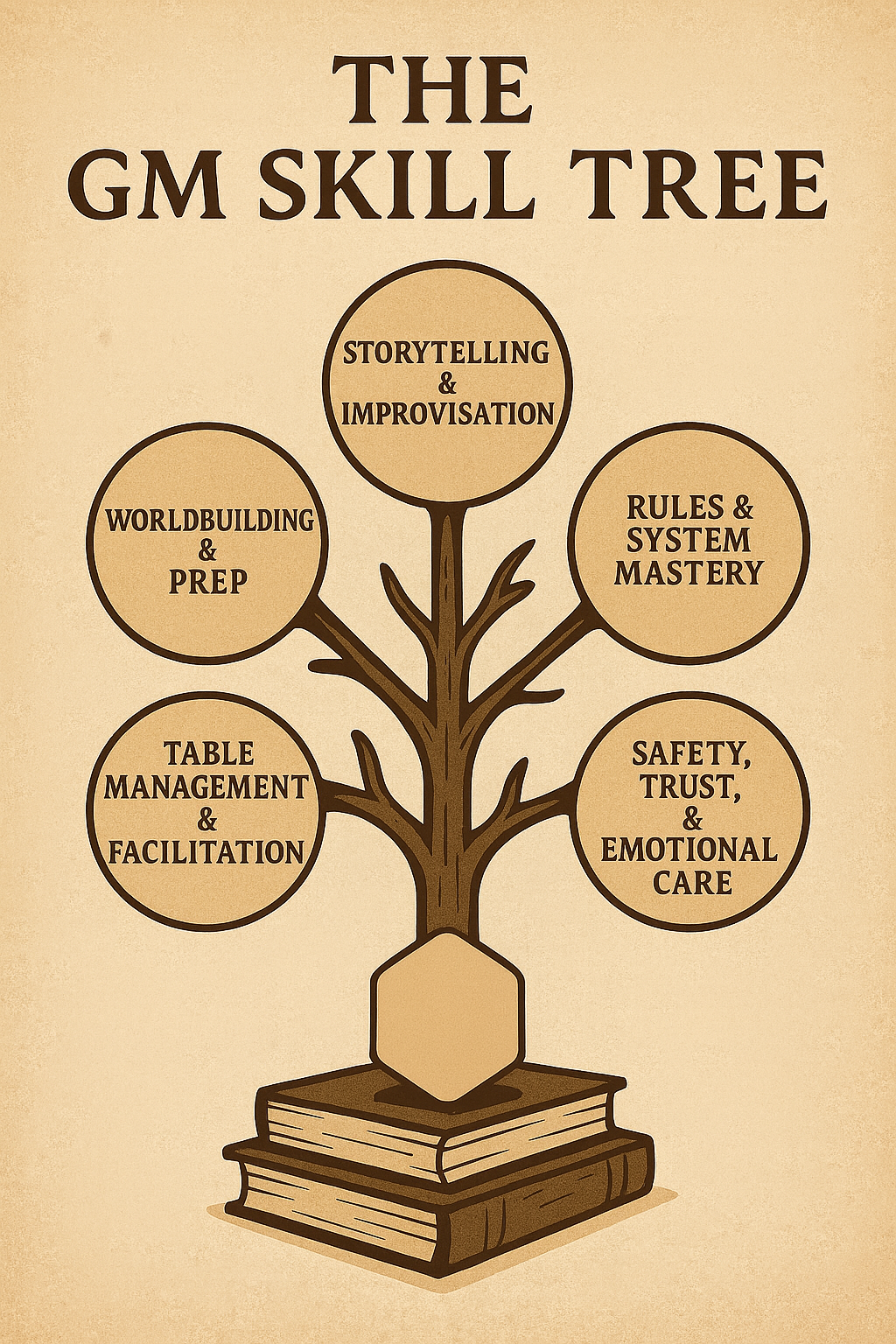Handling Meta-Gaming: Strategies for Keeping Players in Character

Dear Readers, welcome back to our Dungeons & Dragons (D&D) blog! Today, we’re delving into the topic of meta-gaming—a common challenge that can disrupt the immersion and enjoyment of your campaign. Meta-gaming occurs when players use knowledge that their characters wouldn’t logically possess to influence their actions within the game. While it’s natural for players to want to make the best decisions, maintaining character integrity is crucial for a compelling and immersive narrative. In this post, we’ll explore strategies for handling meta-gaming, keeping players in character, and enhancing the overall experience of your campaign. So, let’s dive into the world of role-playing and discover how to handle meta-gaming effectively.
Understanding Meta-Gaming
Meta-gaming involves using out-of-character knowledge to influence in-character decisions. This can take various forms, including:
1. Using Player Knowledge
Players may use information they’ve gained outside of the game, such as reading the campaign module or knowing the stats of monsters, to influence their characters’ actions.
Example: A player uses their knowledge of a monster’s weaknesses, despite their character having never encountered it before, to exploit its vulnerabilities in combat.
2. Acting on Player Discussions
Players may act on strategies discussed out-of-character, even if their characters wouldn’t have had the opportunity to communicate or plan accordingly.
Example: During a dungeon crawl, players discuss a strategy for a trap they suspect is ahead, despite their characters being separated and unable to share this information.
3. Ignoring Character Limitations
Players may ignore their characters’ limitations, such as lack of knowledge, skills, or experience, to make decisions that are advantageous but unrealistic for their characters.
Example: A character with no knowledge of alchemy correctly identifies a rare potion based on the player’s research or previous experiences in other games.
The Impact of Meta-Gaming
Meta-gaming can have several negative effects on a campaign, including:
1. Breaking Immersion
Meta-gaming breaks the immersion by reminding players that they are playing a game rather than living through their characters. This can diminish the sense of adventure and realism.
Example: A player metagames by referring to game mechanics, such as hit points and armor class, during an intense narrative scene, disrupting the immersion.
2. Undermining Challenges
Meta-gaming can undermine the challenges presented by the DM, making encounters and puzzles less engaging and rewarding. When players use out-of-character knowledge, the game’s difficulty and tension are reduced.
Example: A player knows the exact weaknesses of a dragon and uses that knowledge to easily defeat it, removing the intended challenge of the encounter.
3. Reducing Role-Playing
Meta-gaming can reduce role-playing opportunities, as players focus on optimal strategies rather than staying true to their characters’ personalities, backgrounds, and motivations.
Example: A player chooses the most effective combat tactic, even if it contradicts their character’s impulsive and reckless nature, leading to a less authentic portrayal.
Strategies for Handling Meta-Gaming
Handling meta-gaming involves fostering a strong role-playing culture, setting clear expectations, and employing creative techniques to keep players in character. Here are some strategies to help you manage meta-gaming effectively:
1. Set Clear Expectations
Establish clear expectations about meta-gaming and role-playing from the start of your campaign. Communicate the importance of staying in character and respecting the boundaries between player knowledge and character knowledge.
Example: At the beginning of the campaign, discuss with your players how meta-gaming can impact the game and agree on a shared commitment to maintaining character integrity.
2. Encourage Character-Driven Decisions
Encourage players to make decisions based on their characters’ perspectives, knowledge, and motivations. Remind them to consider what their characters would know and how they would react in a given situation.
Example: Prompt players with questions like, “How would your character respond to this situation?” or “What does your character know about this creature?” to encourage character-driven decision-making.
3. Use In-Character Communication
Promote in-character communication and planning during the game. Encourage players to discuss strategies and share information through their characters, enhancing immersion and role-playing.
Example: During a planning session, have players speak and strategize in-character, using their characters’ voices and perspectives to discuss their plans.
4. Limit Out-of-Character Discussions
Limit out-of-character discussions during the game to reduce the temptation of meta-gaming. Establish a rule that players should stay in character as much as possible during sessions.
Example: Introduce a “stay in character” policy where players are encouraged to remain in character throughout the session, except for necessary breaks or clarifications.
5. Introduce Consequences
Introduce in-game consequences for meta-gaming behaviors. If players consistently use out-of-character knowledge to their advantage, introduce complications or challenges that reflect the unrealistic nature of their actions.
Example: If a player’s character suddenly knows a monster’s weaknesses without any in-game justification, have the monster adapt or counteract the character’s tactics in unexpected ways.
6. Reward Role-Playing
Reward players for staying in character and making decisions that align with their characters’ personalities and knowledge. This positive reinforcement encourages role-playing and reduces meta-gaming.
Example: Award inspiration points, bonus experience, or other in-game rewards to players who consistently stay in character and contribute to the narrative.
7. Use Hidden Information
Use hidden information to prevent players from accessing knowledge their characters wouldn’t have. This can involve secret notes, individual player briefings, or hidden rolls.
Example: Provide each player with individual information relevant to their character, such as clues found during an investigation, and encourage them to share or withhold it as they see fit.
8. Create Immersive Challenges
Design challenges that require creative problem-solving and character-driven decisions rather than relying on player knowledge. This encourages players to think from their characters’ perspectives.
Example: Introduce puzzles that rely on in-game knowledge, character skills, or interactions with NPCs, rather than puzzles that players can solve using out-of-game knowledge.
Practical Examples of Managing Meta-Gaming
To illustrate how you can apply these strategies, here are practical examples of managing meta-gaming in different scenarios:
Example 1: The Mysterious Artifact
Scenario: The party discovers a mysterious artifact with unknown properties. Some players recognize it from a previous campaign or online research.
Strategy:
- Set Clear Expectations: Remind players that their characters wouldn’t have knowledge of the artifact and should investigate it in-game.
- Use Hidden Information: Provide individual clues to each character based on their skills and backgrounds, such as arcane knowledge, historical records, or personal connections.
- Encourage Character-Driven Decisions: Prompt players to discuss and analyze the artifact in-character, using their characters’ perspectives and expertise.
Outcome: The players investigate the artifact through role-playing, using their characters’ knowledge and abilities to uncover its secrets, rather than relying on out-of-character knowledge.
Example 2: The Ambush
Scenario: The party is traveling through a forest, unaware of an impending ambush. Some players suspect an ambush based on the DM’s descriptions and previous experiences.
Strategy:
- Limit Out-of-Character Discussions: Encourage players to stay in character and discuss their observations and suspicions through their characters.
- Introduce Consequences: If players meta-game by preparing for the ambush without in-game justification, introduce complications such as additional hidden attackers or environmental challenges.
- Create Immersive Challenges: Design the ambush encounter to rely on character skills, such as perception checks, tracking, or survival instincts, rather than player knowledge.
Outcome: The players navigate the ambush based on their characters’ abilities and observations, enhancing immersion and role-playing while maintaining the challenge.
Example 3: The Hidden Threat
Scenario: The party is exploring a dungeon, and some players recognize a hidden threat from a previous campaign or online resources.
Strategy:
- Use In-Character Communication: Encourage players to share their characters’ knowledge and observations through in-character discussions.
- Reward Role-Playing: Recognize and reward players who stay in character and contribute to the narrative, even if it means not acting on out-of-character knowledge.
- Create Immersive Challenges: Design the dungeon encounter to require in-game investigation and problem-solving, such as deciphering ancient runes or using character-specific skills.
Outcome: The players explore the dungeon and confront the hidden threat through their characters’ abilities and knowledge, maintaining immersion and enhancing the narrative.
Encouraging a Role-Playing Culture
Fostering a strong role-playing culture in your campaign can help reduce meta-gaming and enhance the overall experience. Here are some tips for encouraging role-playing:
1. Lead by Example
As the DM, lead by example by staying in character when portraying NPCs and maintaining the narrative tone. Your commitment to role-playing sets the standard for your players.
Example: During interactions with NPCs, use distinct voices, mannerisms, and personalities to bring the characters to life and encourage players to engage in character.
2. Create Rich Characters
Encourage players to create rich, detailed characters with well-defined backgrounds, motivations, and personalities. This depth makes it easier for players to stay in character and make decisions that align with their characters’ perspectives.
Example: Provide character creation prompts and questions that help players flesh out their characters, such as “What are your character’s greatest fears and ambitions?” or “Who are the important people in your character’s life?”
3. Facilitate Character Interactions
Create opportunities for character interactions and role-playing within the game. This can include social encounters, downtime activities, and character-driven plot hooks.
Example: Introduce NPCs who have personal connections to the characters, such as old friends, rivals, or family members, and create scenarios that encourage character interactions.
4. Emphasize Story Over Mechanics
Emphasize the importance of the story and character development over game mechanics and optimization. Encourage players to prioritize narrative choices and role-playing over finding the most efficient solutions.
Example: Praise players for creative and character-driven solutions, even if they are not the most mechanically optimal, and integrate their actions into the narrative.
5. Provide Role-Playing Rewards
Provide rewards for role-playing, such as inspiration points, bonus experience, or in-game benefits. Recognizing and rewarding role-playing encourages players to stay in character and engage with the narrative.
Example: Award inspiration points to players who consistently stay in character and make decisions based on their characters’ personalities and knowledge.
Dealing with Persistent Meta-Gaming
Despite your best efforts, some players may continue to meta-game. Here are strategies for dealing with persistent meta-gaming:
1. Have a Private Conversation
If a player is consistently meta-gaming, have a private conversation to discuss the issue. Explain how meta-gaming impacts the game and suggest ways they can stay in character.
Example: “I’ve noticed that you’ve been using out-of-character knowledge during sessions. It’s important for the story and immersion that we stay in character. Let’s discuss how we can work together to improve this.”
2. Set Clear Boundaries
Set clear boundaries and consequences for meta-gaming. Communicate these boundaries to all players and enforce them consistently.
Example: “If a character uses knowledge they wouldn’t logically possess, we’ll address it in-game with appropriate consequences, such as complications or additional challenges.”
3. Provide Guidance and Support
Provide guidance and support to help players stay in character. Offer tips, reminders, and encouragement to reinforce positive behaviors and reduce meta-gaming.
Example: “Remember to think about what your character knows and how they would react. If you’re unsure, feel free to ask for clarification or guidance.”
Examples of Creative Consequences for Meta-Gaming
Introducing creative consequences for meta-gaming can help reinforce the importance of staying in character. Here are some examples:
1. Unintended Consequences
Introduce unintended consequences that reflect the unrealistic nature of the meta-gaming action. This can add complexity and challenge to the situation.
Example: If a character uses out-of-character knowledge to exploit a monster’s weakness, have the monster adapt and counteract the character’s tactics in unexpected ways.
2. Misinformation
Provide misinformation that appears accurate to players but is misleading or incorrect. This reinforces the idea that out-of-character knowledge can be unreliable.
Example: If players meta-game by using online resources, provide in-game lore or information that contradicts their assumptions, leading to unexpected outcomes.
3. Character Development
Use the meta-gaming behavior as an opportunity for character development. Introduce challenges or conflicts that encourage the player to reflect on their character’s actions and growth.
Example: If a character suddenly knows a monster’s weaknesses without in-game justification, introduce an NPC who questions the character’s knowledge, leading to a role-playing moment that explores the character’s past or abilities.
Conclusion
Handling meta-gaming is a crucial aspect of maintaining immersion and enhancing the overall experience of your D&D campaign. By setting clear expectations, encouraging character-driven decisions, promoting in-character communication, and introducing creative consequences, you can effectively manage meta-gaming and keep players in character.
Fostering a strong role-playing culture, rewarding role-playing, and providing guidance and support can further enhance the narrative and ensure that your campaign remains engaging and immersive. Whether you’re navigating the complexities of a mysterious artifact, surviving an ambush, or exploring a hidden dungeon threat, these strategies will help you create a rich and rewarding experience for your players.
Until next time, Dear Readers…























